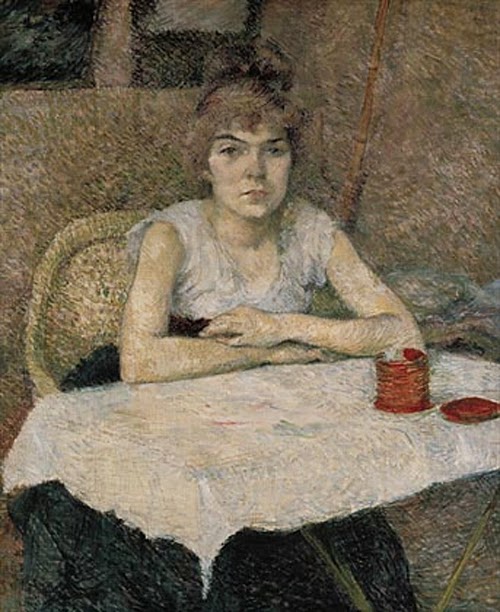"Enlightenment"

*
"Chop that wood....
Carry water
What's the sound of one hand clapping
Enlightenment, don't know what it is
Every second, every minute
It keeps changing to something different...
...Enlightenment, don't know what it is
It says it's non attachment....."
".....I'm in the here and now, and I'm meditating....."
...last roses at La Pouyette... 3 little buds at the end of November...
".....Wake up....


.....Enlightenment says the world is nothing
Nothing but a dream, everything's an illusion
And nothing is real....."
"....You can change it anyway you want
You can rearrange it...."
Van Morrison
like to dedicate the music to
our dear blogger friend and painter Helen Tilston
here
go raibh maith agat
simply THANK YOU !
*****
*
*
*****
And by the way....
 .....today.....
.....today.....
150th Birthday of:
Henri de Toulouse-Lautrec
24 November 1864 – 9 September 1901
"At the Moulin Rouge"
Self-portrait in the crowd,1892
*


Photographer: Guibert, circa 1887
"I paint things as they are, I don't comment"
*
only a few of my favorite paintings:
A Box at the Theater, 1896
*
The Laundress, 1884 - 1886
Upon seeing a mysterious, untamed young woman with glowing red hair
while exiting a restaurant somewhere on the streets of Paris about the
year 1884,
Toulouse-Lautrec exclaimed to his friend:
“She’s a stunner!
What an air of spoiled meat she has!
It would be so marvelous to get
her as a model!”
Later he finally caught up to her, the woman known as
Carmen Gaudin,
a laundress and prostitute that Toulouse-Lautrec tirelessly depicted in many different settings and media.
Referring to Carmen in a letter written to his mother in 1884,
Toulouse-Lautrec gushed that he was
"painting a woman whose hair is absolute gold".
*

La Toilette, 1889
Redhead reveals the artist’s debt to Degas,
but instead of the
ungainly figures found in Degas’ pastels,
Toulouse-Lautrec has created a
beautiful, slender figure with her back to the viewer
and her rich red
hair tied in a knot.
The artist had a predilection for red-headed
models and it has been proposed
that his favourite model, Carmen Gaudin, sat also for this particular painting.
Toulouse-Lautrec gave painting lessons
to Suzanne Valadon, one of his models
(and possibly his mistress as well).
Suzanne Valadon - see also my post from september 2011
*
In Bed, 1893
"Love is when the desire to be desired takes you so badly
that you feel you could die of it"
Henri Toulouse-Lautrec
*
"I have tried to do what is true and not ideal"
Henri Toulouse-Lautrec
I raise my glass to that!
Sláinte - CHEERS!
xxxk
*
*
*
Remark:
Toulouse-Lautrec was drawn to Montmartre, an area of Paris famous for
its bohemian lifestyle and for being the haunt of artists, writers, and
philosophers. Tucked deep into Montmartre was the garden of Monsieur
Pere Foret where Toulouse-Lautrec executed a series of pleasant
plein-air paintings of Carmen Gaudin, the same red-head model who
appears in The Laundress (1888). When the nearby Moulin Rouge cabaret
opened its doors, Toulouse-Lautrec was commissioned to produce a series
of posters. Thereafter, the cabaret reserved a seat for him, and
displayed his paintings. Among the well-known works that he painted for
the Moulin Rouge and other Parisian nightclubs are depictions of the
singer Yvette Guilbert; the dancer Louise Weber, known as the outrageous
La Goulue ("The Glutton"), who created the "French Can-Can"; and the
much more subtle dancer Jane Avril.
Toulouse-Lautrec spent much time in brothels, where he was accepted
by the prostitutes and madams to such an extent that he often moved in,
and lived in a brothel for weeks at a time. He shared the lives of the
women who made him their confidant, painting and drawing them at work
and at leisure.
Lautrec recorded their intimate relationships, which
were often lesbian......
info source here















%2B%2BPortrait%2Bof%2BSuzanne%2BValadon%2B(2).jpg)








